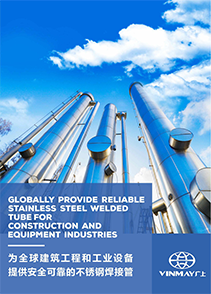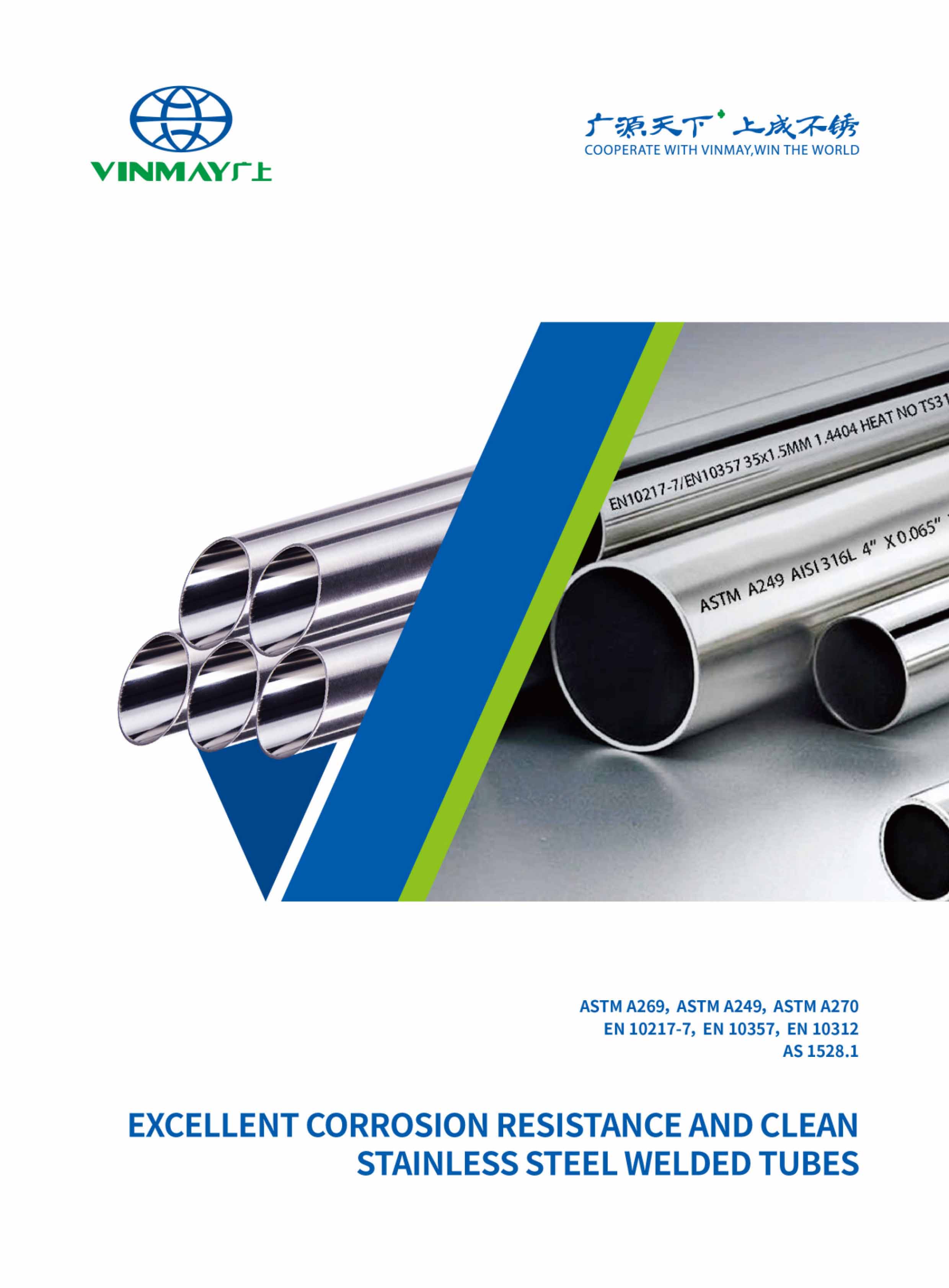Stainless steel pipes are suitable and effective for transporting natural gas, offering robustness and durability. Compliance with ASTM standards, such as A312 and A269, guarantees safety and proper performance. Materials like 304 and 316 stainless steel provide superior corrosion resistance, ideal for harsh environments. While initial costs can be higher, stainless steel's long-term benefits, like reduced maintenance, often outweigh other materials. Understanding these advantages and installation guidelines is crucial for maximizing their potential.
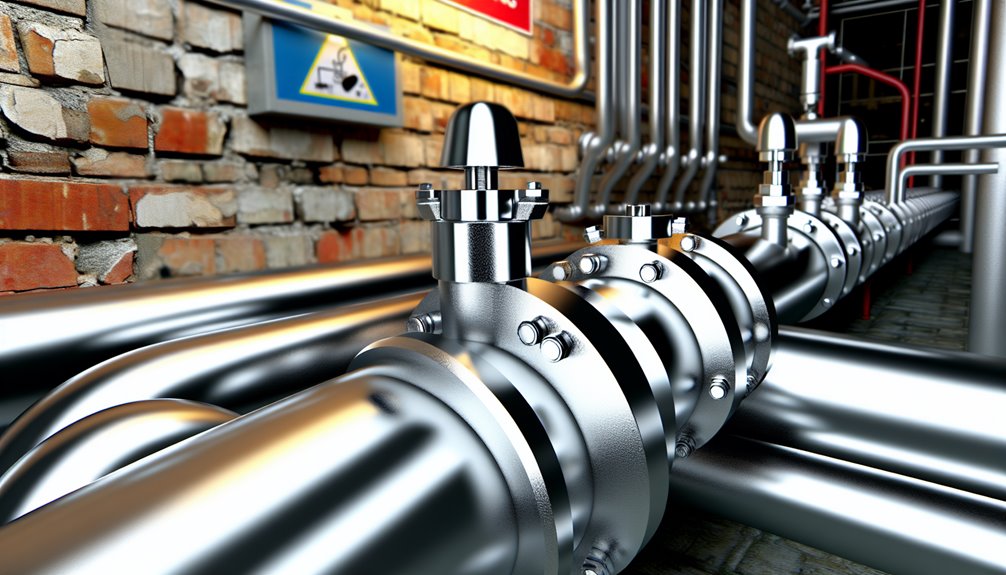
Yes — stainless steel pipe can safely carry natural gas, provided it meets the correct standards, pressure ratings, and installation procedures. The alloy’s natural resistance to corrosion and high tensile strength make it suitable for transporting compressed or ambient-pressure natural gas in residential, commercial, and industrial systems.
However, safety depends on selecting the correct grade (typically 304 or 316L) and ensuring compliance with gas piping standards such as ASME B31.3 or ASTM A312. Using unapproved fittings or non-rated materials can lead to leaks, premature wear, or non-compliance with local building codes.
Natural gas systems usually operate at low to medium pressure, where stainless steel’s yield strength and thermal stability provide a significant safety margin. Grades like 316L are especially effective in resisting oxidation, hydrogen sulfide exposure, and stress cracking, which are common risks in gas distribution.
In high-pressure or cryogenic applications — such as LNG and CNG systems — stainless steel maintains its integrity even under extreme temperature variations, preventing embrittlement or leakage over time. This makes it a preferred material in critical energy infrastructure where both performance and reliability are essential.
While stainless steel is safe, its performance depends on several key factors:
When installed correctly, stainless steel piping offers one of the safest, most durable solutions for natural gas distribution — combining strength, corrosion resistance, and longevity with a modern, professional appearance suited for both industrial and commercial projects.
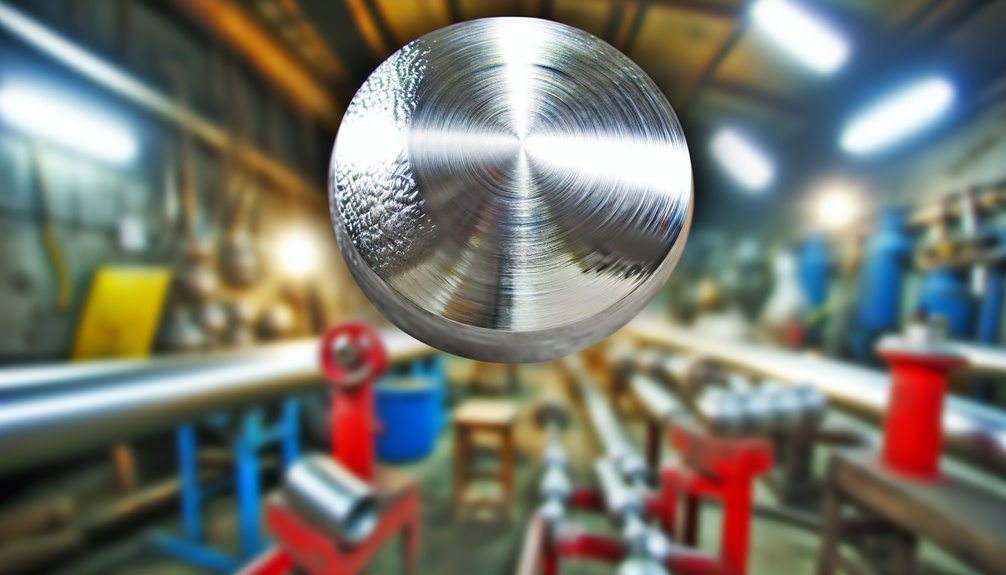
Stainless steel pipes, crafted from chromium and nickel alloys, are vital in gas applications due to their superior corrosion resistance and strength. They are commonly used in environments where the passive layer protects against corrosion and ensures long service life. Additionally, their high tensile strength and oxidation resistance make them reliable for long-term service in varied temperatures and conditions. For systems where cost is a factor, galvanized steel can be considered, but stainless steel offers greater longevity due to its self-repairing oxide properties.
Commonly utilized grades such as 304, 304L, 316, and 316L offer varying levels of durability and leak prevention, making them suitable for natural gas systems. For demanding environments, 316/316L’s molybdenum addition enhances resistance to chlorides and chemicals, as noted in corrosion resistance data.
Understanding their manufacturing process and key properties is essential for selecting the appropriate pipe to guarantee safety and efficiency.
In food and gas systems alike, selecting grades like 304 and 316 ensures compliance with health standards and cost-effectiveness, aided by the self-healing chromium film that enhances corrosion resistance.
A marvel of engineering and material science, stainless steel pipe is crafted to withstand the demanding environments of gas applications. Its construction involves combining iron with chromium and nickel alloys, granting it superior corrosion resistance and strength. The manufacturing process typically includes forming, welding, and annealing, ensuring durability and reliability. Additionally, grades like 316/316L offer enhanced molybdenum content and excellent weldability, with customizable surface finishes that improve corrosion resistance and longevity in gas systems. Unlike tubes that are measured by outside diameter, pipes are typically measured by inside diameter, which aligns with their role in conveying gases. Their recyclable nature supports sustainable practices, reducing environmental impact over the system lifecycle. To ensure hygienic performance where required, certain applications use ASTM A270 sanitary tube specifications that emphasize cleanliness, dimensional control, and corrosion resistance.
Here is a comparison of key attributes:
| Attribute | Stainless Steel Pipe | Alternatives (e.g., Black Steel) |
|---|---|---|
| Corrosion Resistance | High | Low |
| Strength | High | Moderate |
| Maintenance | Low | High |
This precise fabrication allows stainless steel pipes to meet stringent standards for natural gas systems. The controlled production process results in pipes that maintain structural integrity under high pressure and temperature variations, offering a long-lasting solution for gas distribution. Additionally, grades like 316 stainless steel contain molybdenum for enhanced corrosion resistance, making them ideal for harsh environments such as marine or chemical processing.
In the domain of gas applications, selecting the appropriate stainless steel grade is paramount for ensuring safety and efficiency. Among the commonly used grades are 304, 304L, 316, and 316L. Each grade offers distinct advantages. The 304 grade also offers excellent welding characteristics, supporting TIG and MIG processes that maintain joint strength when installed in gas systems. As an added benefit, these grades are available in both seamless and welded forms that meet ASTM specifications, supporting structural integrity and corrosion performance across diverse environments. Additionally, routine care using proper maintenance practices helps preserve corrosion resistance and extend service life in gas systems.
Grade 304, composed of 18% chromium and 8% nickel, provides robust corrosion resistance, while 304L, with lower carbon content, minimizes carbide precipitation during welding. Leveraging the ASTM A554 standard helps ensure precise dimensional tolerances and consistent mechanical properties for rectangular tubes used in gas-related frameworks.
Grade 316, enhanced with 2% molybdenum, excels in resisting pitting in chloride-rich environments, making it ideal for marine applications. Its variation, 316L, shares these benefits with added resistance to aggressive chemicals.
The choice between these grades hinges on environmental factors and specific application requirements, ensuring peak performance and longevity when transporting natural gas.
For environments demanding superior durability, 304’s higher nickel content delivers better corrosion resistance than 201, which can be critical when selecting materials for gas systems.
Corrosion resistance stands as a fundamental attribute of stainless steel pipes, particularly for gas applications where environmental factors can lead to material degradation. This property guarantees longevity and reliability, making stainless steel a preferred choice. Additionally, its strength allows it to withstand high pressures and temperature fluctuations, critical for natural gas systems. Leak prevention is achieved through precise manufacturing and the use of compatible fittings, reducing maintenance and risk. Understanding price dynamics, including raw material costs, logistics, and market demand, can further inform material selection and long-term budgeting for gas infrastructure. Regular inspection and maintenance help identify early signs of pitting corrosion, supporting longevity and leak-free performance in demanding environments. In high-pressure gas systems, seamless stainless steel pipes deliver superior integrity due to their weld-free construction, aligning with industry practices in oil and gas applications. Implementing scheduled preventive maintenance and regular inspections supports leak detection and system integrity, reducing costly repairs over the lifecycle of stainless steel gas piping. Compared with alternatives like galvanized steel, stainless steel offers superior long-term corrosion resistance in many gas distribution environments.
| Property | Benefit | Application Impact |
|---|---|---|
| Corrosion Resistance | Longevity and reliability | Reduces maintenance costs |
| Strength | Withstands pressure changes | Enhances system safety |
| Leak Prevention | Reduces risks | Guarantees operational integrity |
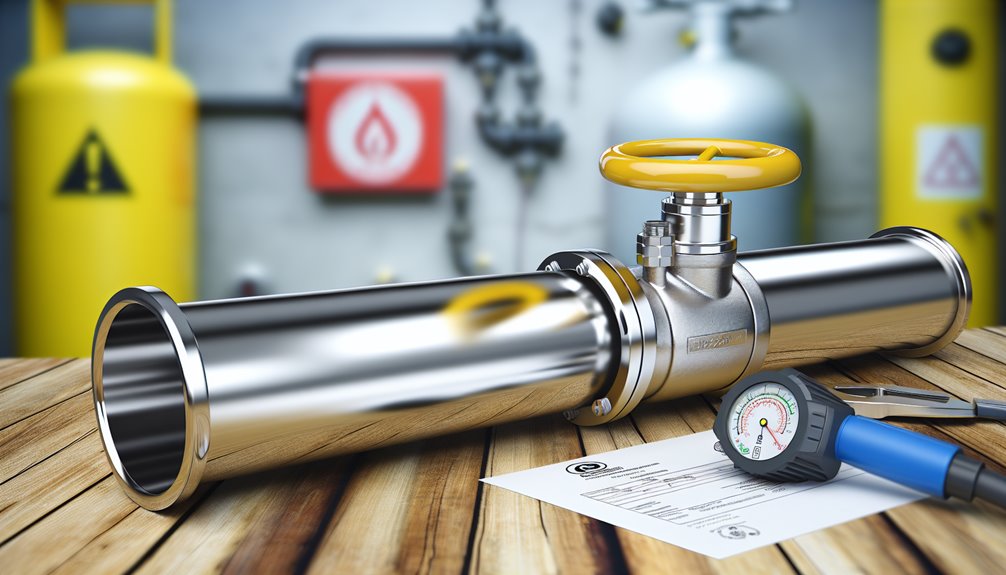
Standards and code compliance are essential for ensuring the safe use of stainless steel pipes in natural gas systems. A pipe schedule describes the wall thickness and pressure capability of stainless steel pipes, so selecting the correct pipe schedule is critical for safety and performance in gas service. Selecting reputable manufacturers with proven quality assurance and certifications helps ensure consistency and reliability across demanding applications. Many applications also benefit from the inherent corrosion resistance and durability of stainless steel highlighted by its common grades like 304 and 316.
International standards such as ASTM A312, ASME B31.3, EN 10217-7, and API 5L provide guidelines for material properties and manufacturing processes. In addition, ASTM A554 sets requirements for mechanical tubing dimensions, tolerances, and surface finish that can inform quality considerations where welded stainless tubes are evaluated for suitability.
Additionally, regional and local certification requirements must be met to approve the use of these pipes in residential, commercial, and industrial gas systems.
In addition, selecting appropriate grades like ASTM A312 304/316 and verifying applicable EN 10217-7 or ASME specifications helps ensure corrosion resistance and pressure integrity in gas service.
When selecting materials for natural gas systems, adherence to international standards is vital for guaranteeing safety and performance. Compliance with widely used ASTM standards helps ensure uniform quality and compatibility across global applications.
Stainless steel pipes must comply with recognized standards to be considered suitable for natural gas applications. These standards provide specifications for material composition, mechanical properties, and testing requirements, facilitating reliable performance. In addition, compliance often includes non-destructive testing and hydrostatic testing to verify weld integrity and material quality. To ensure consistent dimensions and fit-up, buyers should verify pipe size tolerances specified in the applicable standards during procurement and inspection. In applications requiring dimensional control and durability, referencing ASTM A554 tolerances and mechanical data supports proper selection and fabrication practices.
Additionally, stainless steel's high corrosion resistance and strength-to-weight ratio, as highlighted in construction and aerospace applications, support its reliability in harsh natural gas environments.
Maneuvering through regional and local certification requirements is vital for guaranteeing that stainless steel pipes used in natural gas systems meet safety and performance standards. Each jurisdiction may enforce distinct codes and standards, reflecting local environmental conditions and safety priorities.
Compliance with these regulations is imperative to prevent operational disruptions and safety hazards. For instance, relevant certifications might include UL, FM, or ISO, depending on the area.
Adherence to local codes guarantees that installations are legally sanctioned and minimizes liability risks. Professionals involved in the selection and installation of stainless steel pipes should consult local building authorities and certification bodies.
This proactive approach assures that the materials and practices align with current standards, securing ideal operational control and reliability.
Stainless steel pipes are increasingly recognized for their suitability in residential, commercial, and industrial gas systems due to their compliance with stringent standards and codes.
Their corrosion resistance and strength make them an ideal choice for various applications. Compliance with established standards guarantees reliable performance and safety. Users must verify specific regional codes and standards before installation to ascertain full compliance.
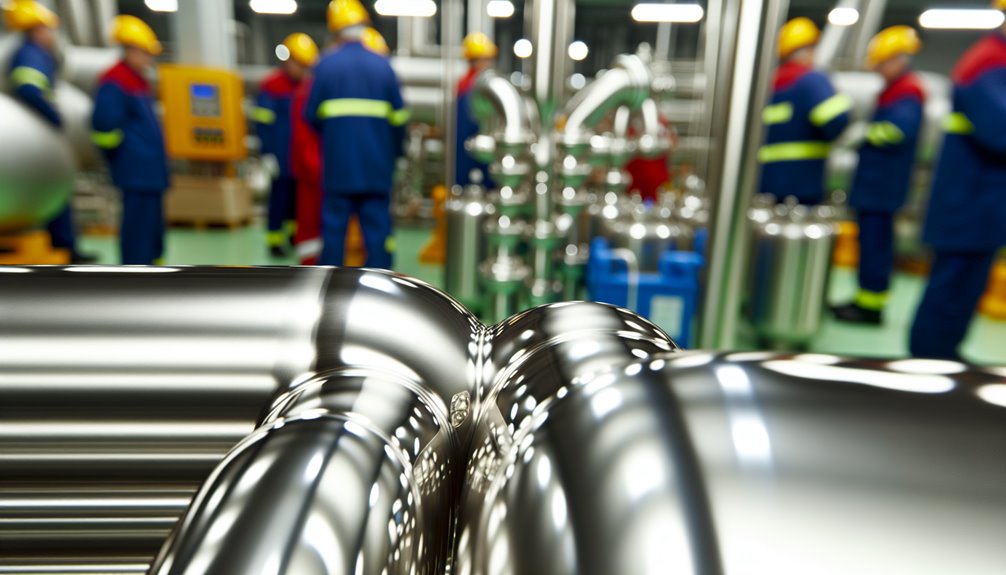
The advantages of stainless steel in natural gas systems are numerous, underscoring its status as a preferred material choice. Its exceptional durability and strength withstand high pressures and temperatures, making it ideal for demanding applications.
The corrosion resistance provided by chromium and nickel alloys prevents leaks and maintains system integrity, essential for safety and longevity. Though the initial investment is higher, the cost-effectiveness over time is evident through reduced maintenance and fewer replacements, resulting in lower operational costs.
Additionally, stainless steel offers ease of maintenance with minimal downtime and promotes a safer working environment. As an eco-friendly option, it aligns with sustainable practices, being 100% recyclable and contributing to reduced carbon footprints, appealing to environmentally conscious stakeholders.
In evaluating stainless steel pipes alongside alternatives such as black iron, copper, CSST, and polyethylene, it is essential to take into account factors like durability, installation complexity, and environmental suitability.
Stainless steel offers significant advantages regarding corrosion resistance and longevity, although it often comes with a higher initial cost.
A comparative analysis of total cost of ownership and specific application needs can help determine the most appropriate material for various natural gas systems.
While selecting the appropriate gas piping material, one must weigh the benefits and drawbacks of each option available.
Stainless steel, known for its corrosion resistance and durability, competes with black iron, copper, CSST, and polyethylene (PE) pipes. Each material presents distinct characteristics, influencing their suitability for various applications.
Selecting the right material guarantees efficient and safe gas transportation.
Choosing the appropriate gas piping material involves evaluating not only the technical characteristics but also the financial implications over the lifespan of the installation.
Stainless steel piping, although more expensive upfront compared to black iron, copper, and CSST, offers long-term savings through reduced maintenance and enhanced durability. Its corrosion resistance eliminates the need for protective coatings, lowering ongoing costs. Additionally, its longevity and recyclability contribute to a lower total cost of ownership.
Conversely, CSST and polyethylene pipes offer quick installation and lower initial costs but may require more frequent maintenance due to susceptibility to environmental wear.
Copper tubing, while durable, can be cost-prohibitive due to market fluctuations.
Each material presents distinct cost-benefit profiles, influencing the decision-making process.
Selecting the ideal gas piping material is a critical decision influenced by the specific demands of each application. Different materials offer unique benefits and limitations that must be assessed to guarantee peak performance.
Stainless steel pipes, recognized for their corrosion resistance and durability, are often preferred in industrial and humid environments. In contrast, other materials may be more suitable in different contexts:
Understanding these attributes aids in making informed decisions tailored to specific project needs.
Stainless steel pipes, while highly durable, are not immune to corrosion or stress cracking under certain conditions, such as exposure to chlorides or high-stress environments.
Additionally, their temperature and chemical compatibility limits can restrict their use in specific applications, necessitating careful consideration and selection of appropriate alloys.
Common misconceptions about their universal suitability for gas piping can lead to improper installations, underscoring the importance of understanding the material's limitations and consulting local codes.
Several environmental conditions can lead to corrosion or stress cracking in stainless steel pipes, making it crucial to evaluate their suitability for specific applications.
Understanding these factors helps in making informed decisions and preventing potential issues. Key conditions to take into account include:
These factors highlight the importance of evaluating each application environment to guarantee stainless steel pipes perform effectively and safely.
When considering the application of stainless steel pipes, temperature and chemical compatibility become critical factors that can dictate their suitability.
Stainless steel offers high corrosion resistance, but certain chemical environments may exceed its limits, necessitating special alloys. Similarly, while these pipes can withstand a wide range of temperatures, extreme conditions can affect their integrity. High heat can complicate welding and sealing, potentially leading to joint failures.
Additionally, project-specific needs and long-term performance expectations should be thoroughly evaluated. The high cost and weight of stainless steel could influence material selection, especially if budget constraints or ease of installation are priorities.
Ultimately, understanding these limitations guarantees informed decision-making and ideal material performance in natural gas applications.
Understanding the temperature and chemical compatibility limits of stainless steel pipes provides valuable insight into their application potential, paving the way for clarifying common misconceptions about their use in gas piping.
Stainless steel is often seen as universally applicable, but certain conditions may limit its effectiveness. Misunderstandings about its suitability can lead to improper application, potentially resulting in system failures.
In the installation of stainless steel pipes for natural gas systems, employing appropriate jointing and welding techniques, such as TIG or orbital welding, guarantees robust connections.
Utilizing compatible fittings and valves that adhere to established connection standards is vital for system integrity.
In addition, compliance with inspection, testing, and maintenance procedures, as outlined in standards like API 570 and ASME IX, is essential for securing long-term reliability and safety.
A variety of jointing and welding techniques, such as TIG (Tungsten Inert Gas), orbital welding, and compression fittings, are recommended for installing gas systems, owing to their efficacy in guaranteeing secure and leak-proof connections.
These methods offer precise control over the installation process, reducing the potential for leaks and guaranteeing compliance with safety standards.
While installing gas systems, guaranteeing proper fittings, valves, and connection standards is essential for safety and efficiency.
Professionals adhere to stringent installation practices to mitigate risks associated with natural gas. Certified technicians select compatible fittings and corrosion-resistant materials to maintain system integrity.
Compliance with local codes and safety regulations is a top priority, guaranteeing that all connections are secure and leak-free. The use of certified valves and fittings enhances the reliability of gas flow control.
Regular inspections and maintenance further guarantee the system's operational safety. Informed choices and professional guidance provide peace of mind, reducing the likelihood of accidents and guaranteeing efficient gas delivery.
Thorough inspection, testing, and maintenance procedures are vital to guaranteeing the safety and reliability of gas piping systems. Compliance with standards such as API 570 and ASME IX is essential for maintaining system integrity. These standards guide professionals in conducting inspections, testing, and maintenance tasks that protect against leaks and failures.
Adhering to these protocols maintains the system's efficiency and safety.
Stainless steel pipes are highly regarded for their versatility and compatibility with various gas types, including natural gas, LPG, and biogas.
They demonstrate excellent performance with hydrogen blends, which is essential as the industry moves toward more sustainable energy solutions.
Additionally, their resilience makes them an ideal choice for hydrogen-ready piping, positioning stainless steel as a future-proof option in evolving gas infrastructure.
Although natural gas, LPG (liquefied petroleum gas), and biogas serve as valuable energy sources, their compatibility with various piping materials, including stainless steel, can vary considerably.
Stainless steel pipes are frequently chosen for natural gas due to their resistance to corrosion and durability. However, when considering LPG and biogas, factors such as pressure levels and chemical composition must be assessed.
Each gas type presents specific challenges that influence material selection:
Understanding these factors guarantees the best material choice and system performance.
Considering the diverse energy sources such as natural gas, LPG, and biogas, the suitability of stainless steel piping varies according to the specific gas characteristics.
When introducing hydrogen blends, stainless steel's compatibility hinges on its tolerance to hydrogen embrittlement. Hydrogen, being the smallest molecule, can permeate metals, potentially causing brittleness.
Stainless steel, particularly grades like 304 and 316, offers resistance to this phenomenon due to its alloy composition. However, the percentage of hydrogen in blends is a critical factor; higher concentrations demand rigorous testing to guarantee structural integrity.
Additionally, temperature and pressure conditions influence stainless steel's performance. Therefore, evaluating these aspects is paramount in determining the pipe's reliability when used with hydrogen-infused gases, assuring safe and efficient operation.
With the evolving energy landscape, hydrogen-ready piping emerges as a pivotal component in the future of gas infrastructure. Compatibility with different gas types becomes essential as the energy sector shifts focus towards cleaner alternatives like hydrogen.
This shift necessitates a careful evaluation of piping systems to guarantee they can handle varying gas compositions without compromising safety or integrity. Key considerations include:
These considerations empower decision-makers to confidently navigate this transformation.
As the demand for efficient and safe energy transportation continues to grow, innovations in gas piping materials and technologies are set to shape the future of the industry. The integration of smart technology, sustainable materials, and improved safety measures are key trends. Advanced sensors can monitor gas flow and pressure, providing real-time data for proactive maintenance.
| Trend | Benefit | Challenge |
|---|---|---|
| Smart Technology | Real-time monitoring | High initial costs |
| Sustainable Materials | Reduced emissions | Material sourcing |
| Enhanced Safety | Lower risk of leaks | Regulatory changes |
Sustainable piping materials, such as bio-based polymers, offer reduced environmental impact while maintaining performance. Enhanced safety features, including improved leak detection systems, aim to minimize risks. The evolving regulatory landscape will require ongoing adaptation and investment from industry stakeholders to guarantee compliance and safety.
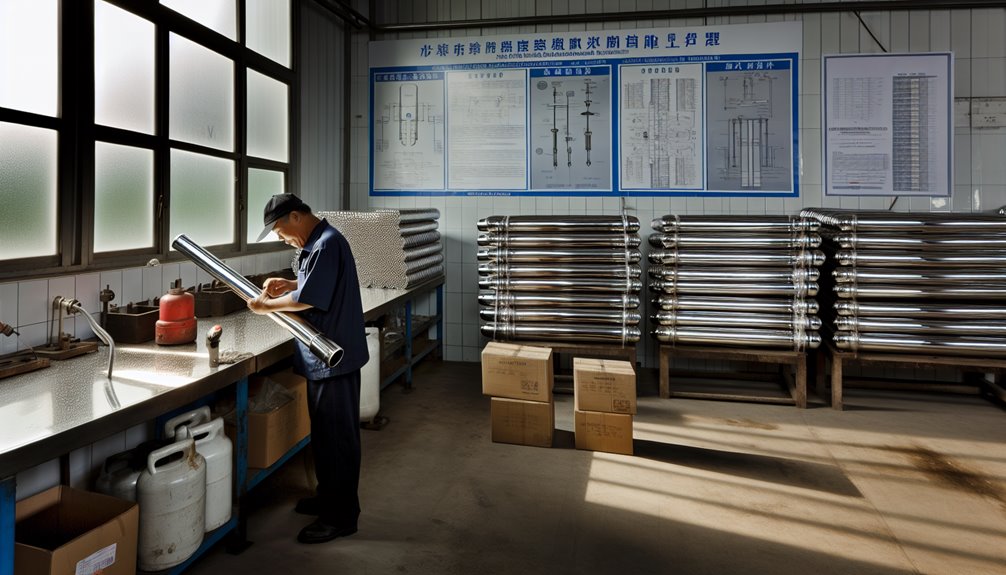
Selecting the right stainless steel pipe supplier is essential for the success of any project involving natural gas systems. A reliable supplier guarantees the quality, compliance, and timely delivery of materials, which are critical for maintaining safety and efficiency.
Key considerations in choosing a supplier include:
Selecting wisely empowers project stakeholders with confidence and control.
In extreme cold weather, stainless steel pipe excels in maintaining structural integrity, ensuring durability, and offering reliable performance. Its resistance to thermal contraction and retention of ductility provide control over potential fracture risks, assuring consistent functionality.
Stainless steel pipes offer a sleek, modern appearance, enhancing visual appeal in exposed installations. Their polished finish resists tarnishing, ensuring long-lasting aesthetics. Architects and designers often prefer them for projects prioritizing a clean, sophisticated look.
Stainless steel gas pipes, like the sentinels of an empire, require periodic inspections for integrity, ensuring no leaks breach their defenses. Regular cleaning prevents corrosion's insidious creep, while vigilant monitoring of connections maintains the system's steadfast strength.
Yes, stainless steel pipes can be recycled after use. Their 100% recyclability supports sustainable practices, contributing to the circular economy. This reduces environmental impact and guarantees efficient resource utilization, appealing to those prioritizing eco-friendly solutions.
Like a steadfast sentinel, stainless steel often stands with higher upfront costs compared to composite materials. However, its durability and low maintenance costs over time provide a sense of control and security for discerning investors.
In summary, stainless steel pipes offer a compelling solution for natural gas transportation, overcoming concerns about cost with their longevity and minimal maintenance needs. While initial investment might seem higher compared to alternative materials, the durability and corrosion resistance of stainless steel guarantee a reliable and safe gas system. By adhering to standards like ASTM A312 and EN 10216-5 and understanding local regulatory complexities, stakeholders can confidently integrate stainless steel pipes into their gas infrastructure, paving the way for future advancements.
